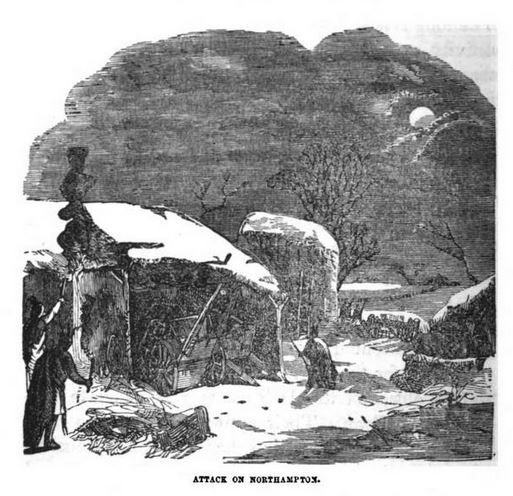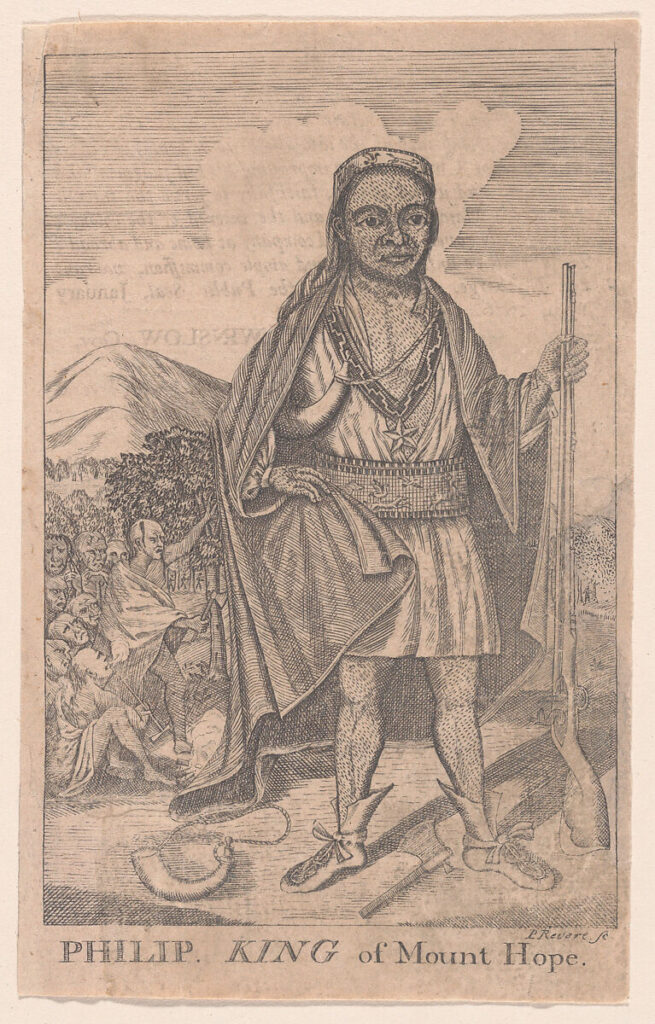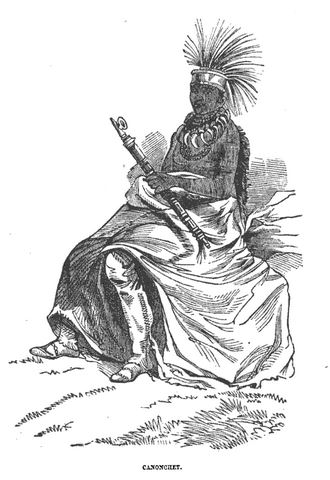King Philip’s War was a war between the English colonists and the Native Americans in New England in the late 17th century. It was a brief but deadly war with a timeline that spans only a few years.
The following is a timeline of King Philip’s War:
1662:
- In July, the leader of the Wampanoag tribe, Alexander, is arrested by Major Josiah Winslow of Plymouth colony at Alexander’s hunting lodge in Halifax, Mass on suspicion that he is planning an attack against the colonists.
- Alexander dies suddenly after being released by the colonists and rumors spread among the Wampanoag that he was poisoned.
- King Philip, Alexander’s brother, comes into power after Alexander’s death.
- On August 6, King Philip appears at the court at Plymouth colony with his interpreter and secretary, John Sassamon, to renew the peace treaty between the Wampanoag tribe and the Plymouth colonists in 1621.
1669:
- John Sassamon flees Mount Hope after committing some unknown offense and returns to Natick.
1671:
- In the spring, the colonists notice the Wampanoags gathering in large groups, sharpening their hatchets and repairing their guns and become suspicious that King Philip is planning an attack against Plymouth colony.
- In mid-April, the colonists summon Philip to Taunton, Mass where he is pressured into signing a peace treaty that requires the Wampanoag to surrender their arms.
1675:
- In early January, the newly converted Christian Indian John Sassamon tells Plymouth’s governor Josiah Winslow that he has been watching King Philip and believes he is planning an attack against the colonists.
- Word of Sassamon’s conversation with the Plymouth authorities reaches King Philip and he declares Sassamon a traitor and an outlaw.
- On January 29, Sassamon is found dead at Assawompset Pond in Middleboro, Mass and an Indian witness claims he saw an Indian named Tobias Poggapanossoo, one of Philip’s counselors, and two other Indians kill Sassamon and throw his body in the pond. Tobias is quickly arrested.
- In March, three Wampanoag men are indicted for the murder of Sassamon: Tobias, his son Wampapaquan and Mattashunannamo
- In June, the three Wampanoag men stand trial for Sassamon’s murder.
- On June 8, the three Wampanoag men are hanged at Plymouth for the murder of John Sassamon but Wampapaquan is temporarily saved when the rope breaks during his hanging. Wampapaquan confesses that his father and Mattashunannamo did kill Sassamon but states he was not involved and the colonists give him a temporary stay of execution.
- In mid-June, colonist Benjamin Church receives an invitation to a dance hosted by the Awashonks tribe in Rhode Island during which their queen, Sakonnet, tells him that King Philip is planning for war against the colonists and is seeking an alliance with her.
- Church then travels to Plymouth Colony to tell Governor Josiah Winslow about King Philip’s plan. Governor Winslow responds by ordering all of the soldiers he has to Mount Hope to prepare for war.
- King Philip sees the raising of troops against him as an act of war but refrains from making the first move.
- On June 20, some natives enter the town of Swansea, Mass and loot several homes while the colonists are at church. During the looting, one of the natives is shot by a colonist, which King Philip interprets as the first act of war against him.
- On June 20, King Philip responds by ordering a raid on Swansea during which a band of Pokanoket warriors attack, loot and burn several homes.
- On June 23, more houses are looted and burned in Swansea, a Wampanoag warrior is shot and wounded by colonist John Salisbury, Salisbury and six other colonists are later ambushed and killed near Swazey Corner in Swansea.
- On June 24, King Philip orders an attack on Swansea, which becomes the first official battle of King Philip’s War.
- On June 28, the colonists send a military expedition to destroy a Wampanoag village at Mount Hope in retaliation for the Swansea attacks.
- On June 26 – 29, the Wampanoags attack the frontier towns of Rehoboth and Taunton in Massachusetts.
- In July, Wampapaquan is executed by being shot to death.
- In July, King Philip and his men are forced to leave Mount Hope for Nipmuc territory.
- In July, representatives of the Mohegan tribe travel to Boston and pledge their support for the colonists. In response, the Narraganset tribe refuse to side with the colonists because the Mohegans are their enemies.
- On July 8-9, the Wampanoags attack and burn Middleborough, Mass and then attack Dartmouth, Mass where they kill several colonists and burn around 36 homes.
- On July 14, the Nipmuc tribe attack Mendon, Mass and kill six colonists.
- On July 15, the Narragansett tribe sign a peace treaty with the Connecticut colony.
- On July 19, Massachusetts Bay and Plymouth Colony forces storm Pocasset Swamp in Massachusetts.
- On July 28, Captain Edward Hutchinson and Captain Thomas Wheeler of the Massachusetts Bay Colony embark on a diplomatic mission to meet with tribal chief Muttawmp to secure the allegiance of the Nipmuc tribe.
- On August 2, “Wheeler’s Surprise” takes place when Hutchinson and Wheeler’s diplomatic party is ambushed by a band of Nipmucs near Brookfield, Mass. Both captains are wounded and Hutchinson dies of his wounds two weeks later.
- On August 2-4, the Siege of Brookfield takes place after the surviving soldiers ambushed during “Wheeler’s Surprise” flee to Brookfield where they are besieged by the Nipmucs for days. Under the cover of night, officer Ephraim Curtis escapes from Brookfield and locates Major Simon Willard and his troops.
- On August 4, Major Simon Willard and his troops arrive in Brookfield to rescue the town and the Nipmuc withdraw.
- On August 13, the Massachusetts Council orders all Christian Indians (natives who have converted to Christianity) to be confined to their Praying Towns.
- On August 22, a band of Nipmucs led by their sachem, Monoco, attack Lancaster, Mass where they kill several colonists.
- On August 24-25, a band of Nipmucs raid Springfield, Mass.
- On August 25, a skirmish takes place at Sugarloaf Hill in Massachusetts during which nearly 40 natives and several militia members are killed.
- On September 1, Wampanoags and Nipmucs attack Deerfield and Hadley, Mass.
- On September 2, Wampanoags and Nipmucs attack Northfield, Mass where they burn down half the buildings in the town and kill eight colonists.
- On September 4, a company of 36 militia led by Captain Richard Beers heads to Northfield to rescue the survivors but are ambushed and around 21 men, including Captain Beers, are killed.

- On September 9, the New England Confederation declares war on the Wampanoags, officially beginning King Philip’s War.
- On September 28, the Battle of Bloody Brook takes place in South Deerfield, Mass.
- In October, the Narragansetts and the United Colonies sign a treaty to maintain peace between them, but the Narragansetts break the terms of the treaty.
- On October 5, Springfield, Mass is attacked by the Pocomtuc Tribe.
- On October 16, Hatfield, Mass is attacked and severely damaged.
- On November 2, Plymouth Governor Josiah Winslow leads a militia unit against the Narraganset tribe in Rhode Island.
- On November 12, the United Colonies of New England declares war on the Narragansetts.
- On December 19, the Great Swamp Fight takes place near South Kingstown, Rhode Island during which 1,000 Narragansetts are killed or captured and their fort is destroyed.
1676:
- On January 27, the Narragansetts attack and destroy Pawtucket, Rhode Island.
- In January and February, a company of soldiers led by Josiah Winslow pursue the Narragansett, in what comes to be known as the “hungry march,” but come under attack themselves, run out of supplies and give up the pursuit in February.
- On February 1, the garrison at Framingham, Mass is attacked by the Nipmuc.
- On February 10, Lancaster, Mass is attacked by the Wampanoag Indians and colonist Mary Rowlandson is captured by during the raid.
- On February 21, Medfield, Mass is attacked by 300 Nipmuc and Narragansett warriors.
- On February 25, Weymouth, Mass is attacked.
- On March 2, Groton, Mass is attacked and later abandoned by the colonists.
- On March 12, the Wampanaoag, Nipmuc and Narragansett attack Plymouth Plantation.
- On March 14, Northampton, Mass is attacked and the natives are driven back by Connecticut troops led by Major Robert Treat.

- On March 16, Warwick, Rhode Island is attacked by the Wampanoags and the Narragansett and destroyed.
- On March 26, the Nine Men’s Misery Incident takes place when a colonial militia unit of 60 Plymouth militiamen led by Captain Michael Pierce is ambushed by Narragansett Indians in Central Falls, Rhode Island. Ten of the militiamen are taken prisoner and nine are later tortured to death at a site in Cumberland, Rhode Island.
- On March 28, the Narragansetts attack Rehoboth, Mass where they destroy 42 homes.
- On March 29, the Narragansetts completely destroy Providence, Rhode Island.
- On April 3, the leader of the Narragansett tribe, Canonchet, is captured by the colonial militia in Connecticut and handed over to the sachem of the Mohegan tribe, Oneco, who shoots, draws and quarters him and sends his head to colonial officials in Connecticut.
- On April 9, Bridgewater, Mass is attacked.
- On April 15, Chelmsford, Mass is attacked and destroyed.
- On April 17, Marlborough, Mass is attacked and destroyed.
- On April 21, around 500 Algonquins attack Sudbury, Mass.
- On May 2, Mary Rowlandson is ransomed and released by the Wampanoags at Redemption Rock in Princeton, Mass.
- On May 8, Bridgewater, Mass is attacked by Wampanaoag sachem Tispaquin and his warriors.
- On May 11, Halifax, Mass is attacked and destroyed.
- On May 18, the Battle of Great Falls takes place in Massachusetts when Captain William Turner of the Massachusetts militia attacks the Indian camp “Tuner’s Falls” at Peskeopscut.
- On May 20, Scituate, Mass is attacked.
- On May 30, Hatfield, Mass is attacked in retaliation for the Battle of Great Falls and seven colonists are killed.
- On June 12, around 250 Native Americans are defeated in battle at Hadley, Mass.
- On June 19, the Massachusetts Bay Colony issues a declaration of amnesty for Indians who surrender.
- On July 1, the Connecticut Allied Force arrive at a native village near Nipsachuck swamp in Rhode Island and attack and kill 171 Narragansetts.
- On July 3, the Warwick Massacre takes place when 80 Narragansett surrender at Warwick, Rhode Island and are massacred by the colonial militia.
- On July 15, an attack on Taunton, Mass is repulsed.
- On July 15, the sachem of the Niantic tribe, Ninigrit, formally signs a peace treaty with Massachusetts Bay.
- On July 20, Benjamin Church leads a company of soldiers on an attack on King Philip’s camp near Bridgewater, Mass. Philip escapes but his wife and child are captured and sold into slavery in the West Indies.
- On July 25, the Narragansett are defeated near Dedham, Mass.
- On August 12, King Philip is killed by a Native American pilgrim ally named John Alderman. Aldermen sells Philip’s head to the authorities at Plymouth colony and it is placed on a stake in Plymouth colony where it remains for 25 years.
- On August 28, King Philip’s chief counselor and head captain, Anawan, and his followers are captured near Squannakonk Swamp in Rehoboth, Mass.
1678:
- On April 12, Sir Edmund Andros negotiates a treaty with the northern bands of Native Americans at Casco Bay in Maine, known as the Treaty of Casco Bay, which officially brings King Philip’s War to an end.
For more info on King Philip’s War, check out this article on the primary sources of King Philip’s War.
Sources:
Shultz, Eric B. and Michael J. Tougias. King Philip’s War: The History and Legacy of America’s Forgotten Conflict. Countryman Press, 2017.
Mather, Increase. The History of King Philip’s War. Albany: J. Munsell, 1862.
Strock, Daniel. Pictorial History of King Philip’s War. Tiffany and Company, 1851.
Church, Benjamin. History of King Philip’s War. Milo Miller and Company, 1829.
Kawashima, Yasuhide. Igniting King Philip’s War: The John Sassamon Murder Trial. University Press of Kansas, 2001.
“John Sassamon.” Natick Historical Society, natickhistoricalsociety.org/sassamon
“Mount Hope Historical Marker.” Historical Marker Database, hmdb.org/m.asp?m=186121



